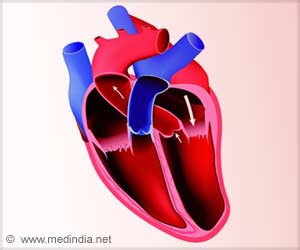Lifestyle is key to cardiovascular health, two large studies from Northwestern Medicine confirm.

“Health behaviors can trump a lot of your genetics,” said Donald Lloyd-Jones, M.D., chair and professor of preventive medicine at Northwestern University Feinberg School of Medicine and a staff cardiologist at Northwestern Memorial Hospital. “This research shows people have control over their heart health. The earlier they start making healthy choices, the more likely they are to maintain a low-risk profile for heart disease.”
The first Northwestern Medicine study investigated why most young adults, who have a low-risk profile for heart disease, often tip into the high-risk category by middle age with high blood pressure, high cholesterol and excess weight.
The unhealthy shift is the result of lifestyle, the study found. More than half of the young adults who followed the five healthy lifestyle factors for 20 years were able to maintain their low-risk profile for heart disease though middle age. (The five healthy lifestyle factors are not smoking, low or no alcohol intake, weight control, physical activity and a healthy diet.)
“This means it is very important to adopt a healthy lifestyle at a younger age, because it will impact you later on,” said Kiang Liu, lead author of the study and a professor of preventive medicine at the Feinberg School.
There are big benefits to reaching middle age with a low-risk profile for heart disease. These individuals will live much longer, have a better quality of life and generate lower Medicare bills. A low-risk profile means low cholesterol, low blood pressure, no smoking, no diabetes, regular physical activity, a healthy diet and not overweight.
Advertisement
After 20 years, the prevalence of a low-risk profile was 60 percent for participants who followed all five healthy lifestyle factors, 37 percent for four factors, 30 percent for three factors, 17 percent for two and 6 percent for one or zero. The results were similar for men only, women only, black only and white only.
Advertisement
Tracking Three Generations of Families for Cardiovascular Health
The second Northwestern Medicine study examined three generations of families from the Framingham Heart Study to determine the heritability of cardiovascular health. Heritability includes a combination of genetic factors and the effects of a shared environment such as the types of foods that are served in a family.
Only a small percentage of the United States population — 8 percent — has ideal levels of all the risk factors for cardiovascular health at middle age.
The study found that only a small proportion of cardiovascular health is passed from parent to child; instead, it appears that the majority of cardiovascular health is due to lifestyle and healthy behaviors.
“What you do and how you live is going to have a larger impact on whether you are in ideal cardiovascular health than your genes or how you were raised,” said Norrina Allen, the lead study author and a postdoctoral fellow in preventive medicine at the Feinberg School.
The Northwestern Medicine study looked at three generations of families including 7,535 people at age 40 and a separate group of 8,920 people at age 50. The goal was to see who was in ideal cardiovascular health at these two critical periods in middle age.
Both Northwestern Medicine studies build on previous research from the department of preventive medicine that has provided the core for the national definition of cardiovascular health over the past decade, noted Lloyd-Jones.
“We really need to encourage individuals to improve their behavior and lifestyle and create a public health environment so people can make healthy choices,” Lloyd-Jones said. “We need to make it possible for people to walk more and safely in their neighborhoods and buy fresh affordable fruit and vegetables in the local grocery store. We need physical activity back in schools, widely applied indoor smoking bans and reduced sodium content in the processed foods we eat. We also need to educate people to reduce their calorie intake. It’s a partnership between individuals making behavior changes but also public health changes that will improve the environment and allow people to make those healthy choices.”
Source-Medindia









